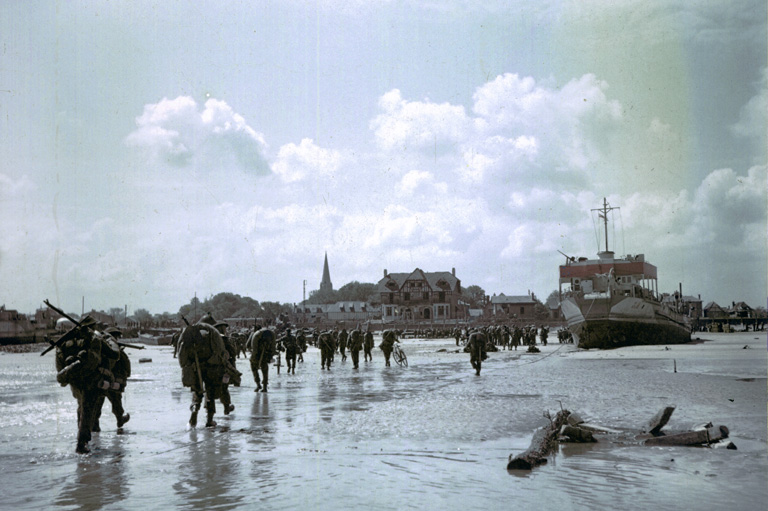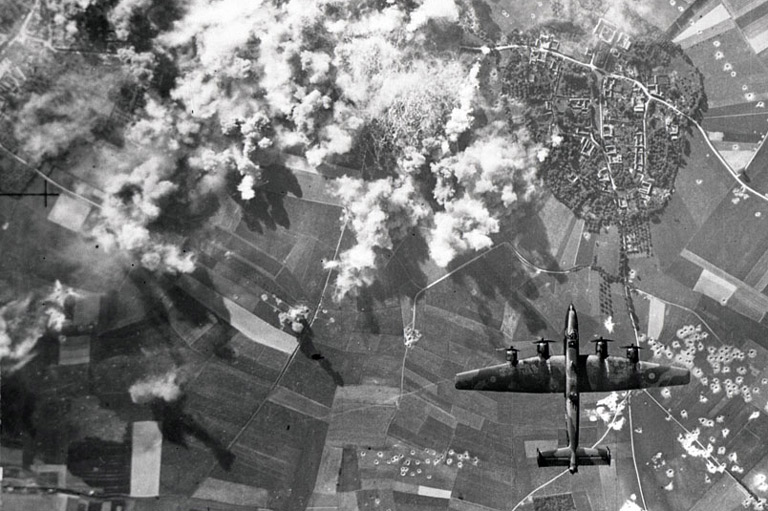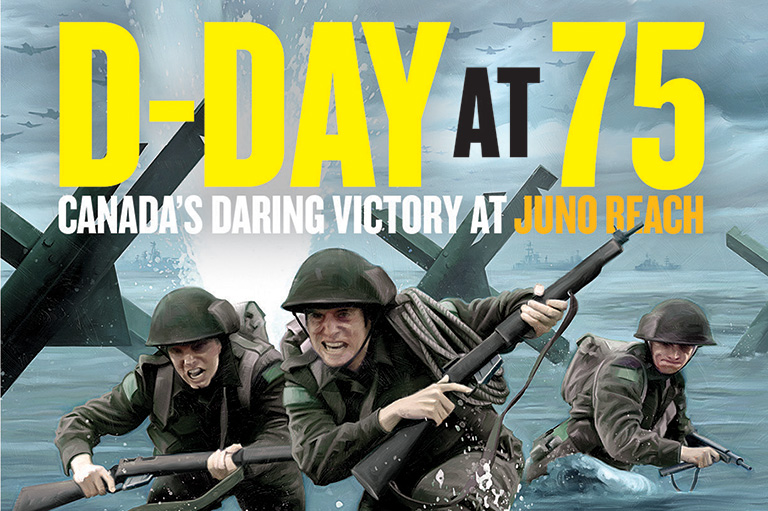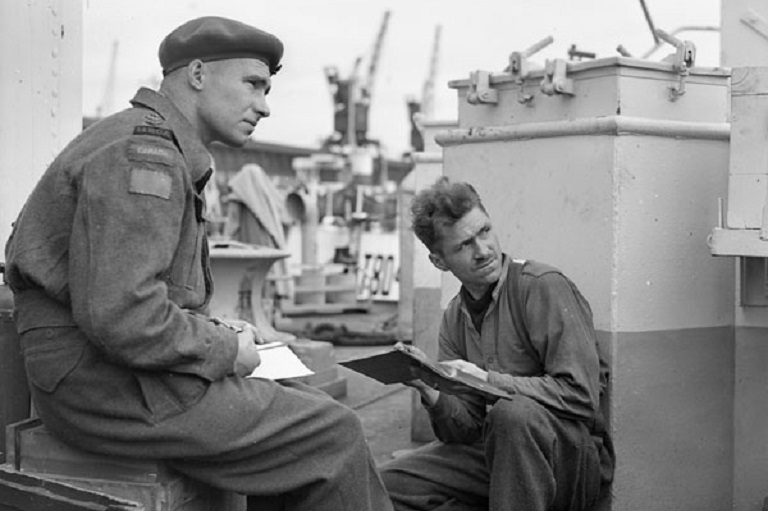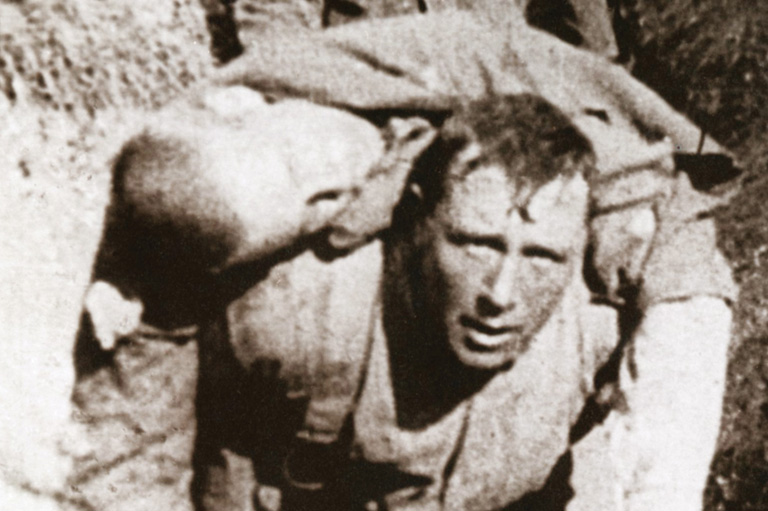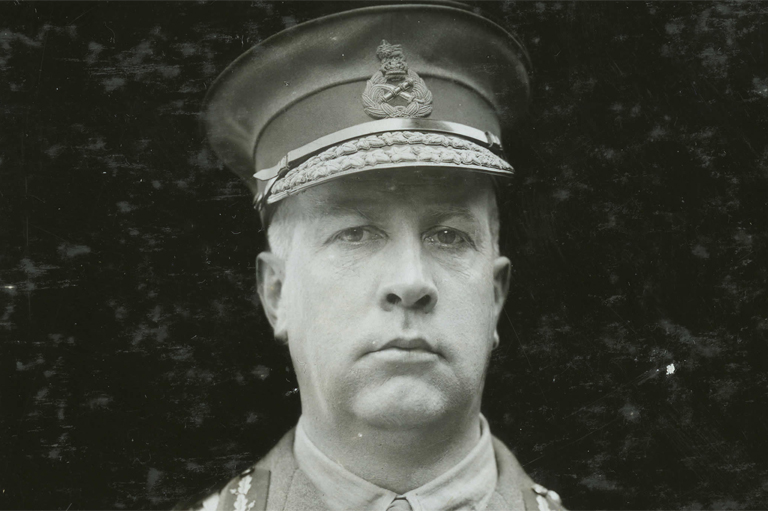Swamped

June 6 marks the eightieth anniversary of D-Day, the Allied invasion of Normandy, France, that led to the liberation of Nazi-occupied Western Europe. More than fourteen thousand Canadian soldiers landed on Juno Beach that day.
One of them was my father, Trooper Ernest “Frank” Edwards, of the Sherbrooke Fusiliers armoured regiment. He was half of a two-man advance navigation party travelling with eight tanks of the 1st Hussars regiment during the first wave of the assault. Unfortunately, their jeep ended up submerged underwater several hundred metres offshore, instead of on the beach.
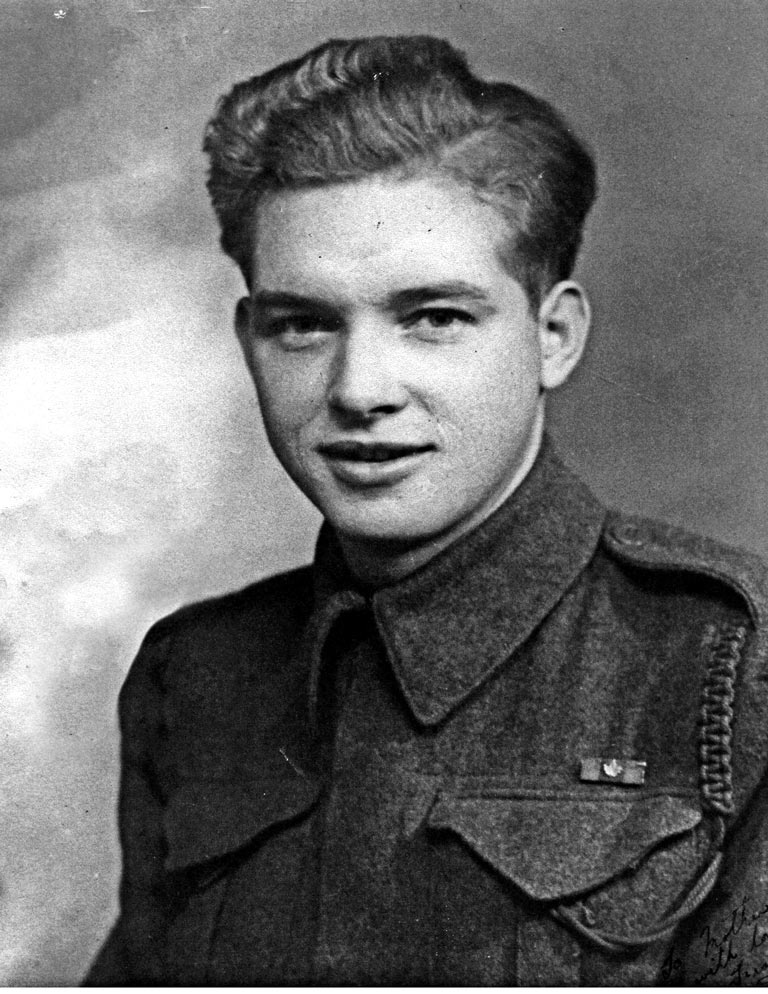
Heavy seas had dislodged the landing craft’s massive front ramp midway across the English Channel, and the boxy sixty-metre-long boat had scooped sea water for hours. When the dangling ramp snagged a sandbar midmorning, the eight tanks and the sole jeep had to disembark far away from the beach and well behind schedule.
The waterproof tanks, equipped with flotation devices, made it to shore, but the jeep sank like a stone.
Edwards and his lieutenant spent almost two hours watching the early attack while standing atop the jeep, neck-deep in water, praying that incoming boats and outgoing German shells would miss them. After being towed ashore, Edwards spent the day trying to coax the drowned vehicle back to life in the midst of the beach’s mayhem, anxious to catch up with his regiment.
For the next eleven months, Edwards drove trucks in a small supply echelon that followed the Fusiliers’ fighting tanks, skirting the edge of pitched battles to deliver ammunition, water, fuel, and replacement crews. The truckers were in constant motion — easy targets for enemy gunners — with no time to shoot back.
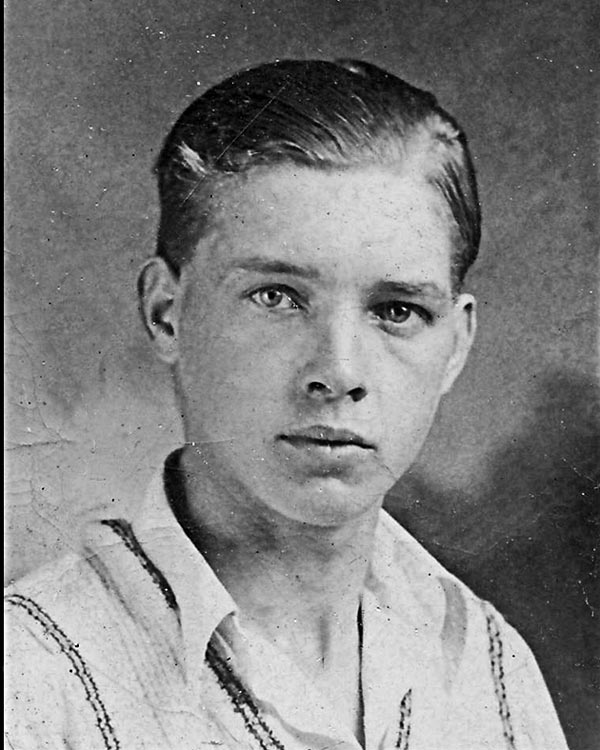
That fall, Edwards finally received two days’ rest in Brussels, Belgium. He took time out of that first leave from combat to pose for a twenty-second birthday portrait to send back to his parents in Oshawa, Ontario.
Like many of Canada’s enlisted men, Edwards had only a grade seven education. He had dropped out of school during the Depression to work on local farms and in logging camps with his older brothers. He joined the Sherbrooke Fusiliers at Toronto’s Canadian National Exhibition grounds in June 1942 at age nineteen and celebrated his twentieth birthday aboard the new Queen Elizabeth ocean liner, en route to Britain.
Six Edwards boys served overseas, and they all survived the war. Four of the brothers landed in Normandy over the course of the summer-long campaign. In addition to Frank, one was a mechanic, another a welder, and the fourth was an infantryman who was twice wounded. Another brother stayed in England, and the sixth arrived in Europe as the war ended in 1945.
In February 1946, Frank Edwards returned to Oshawa, where he eventually married a young English woman, Joyce Waite. They raised four children. He worked for almost thirty years at the local General Motors assembly plant and died in 2020 in his ninety-eighth year, the last of his twelve siblings.
With 7 uniquely curated newsletters to choose from, we have something for everyone.
By the numbers
D-Day Anniversary
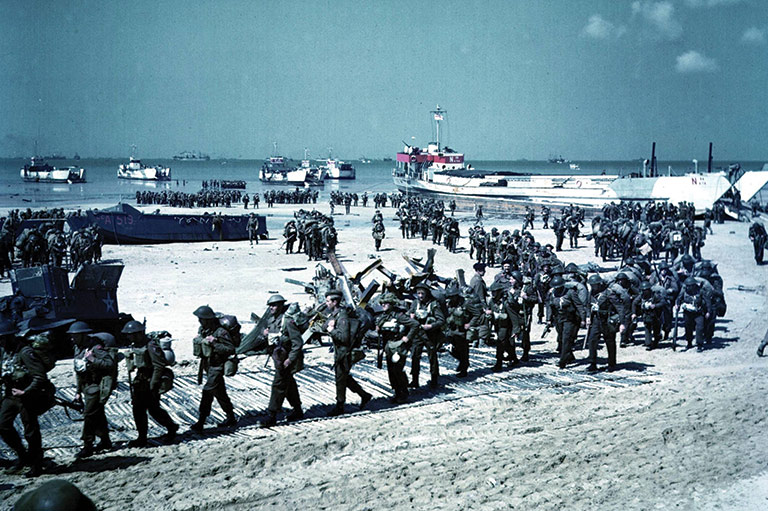
Eighty years ago, on June 6, 1944, thousands of Allied soldiers landed on the beaches of northern France to launch the Normandy Campaign, the first phase of a nearly year-long operation to liberate Western Europe from Nazi occupation.
8
The length in kilometres of the beach on which Canadian soldiers landed. Code-named Juno, it was part of an eighty-kilometre stretch of heavily fortified coastline that was invaded by 150,000 Allied troops on D-Day.
110
Number of Royal Canadian Navy ships that supported the landing.
15
The number of Royal Canadian Air Force fighter and fighter-bomber squadrons that helped to control the skies over Normandy on D-Day.
1074
Canadian casualties on D-Day, including 359 killed and 715 wounded or captured.
77
Days it took for Allied forces to overcome German defences in Normandy after the D-Day landings.
We hope you’ll help us continue to share fascinating stories about Canada’s past by making a donation to Canada’s History Society today.
We highlight our nation’s diverse past by telling stories that illuminate the people, places, and events that unite us as Canadians, and by making those stories accessible to everyone through our free online content.
We are a registered charity that depends on contributions from readers like you to share inspiring and informative stories with students and citizens of all ages — award-winning stories written by Canada’s top historians, authors, journalists, and history enthusiasts.
Any amount helps, or better yet, start a monthly donation today. Your support makes all the difference. Thank you!
Themes associated with this article
Advertisement
Save as much as 40% off the cover price! 4 issues per year as low as $29.95. Available in print and digital. Tariff-exempt!

